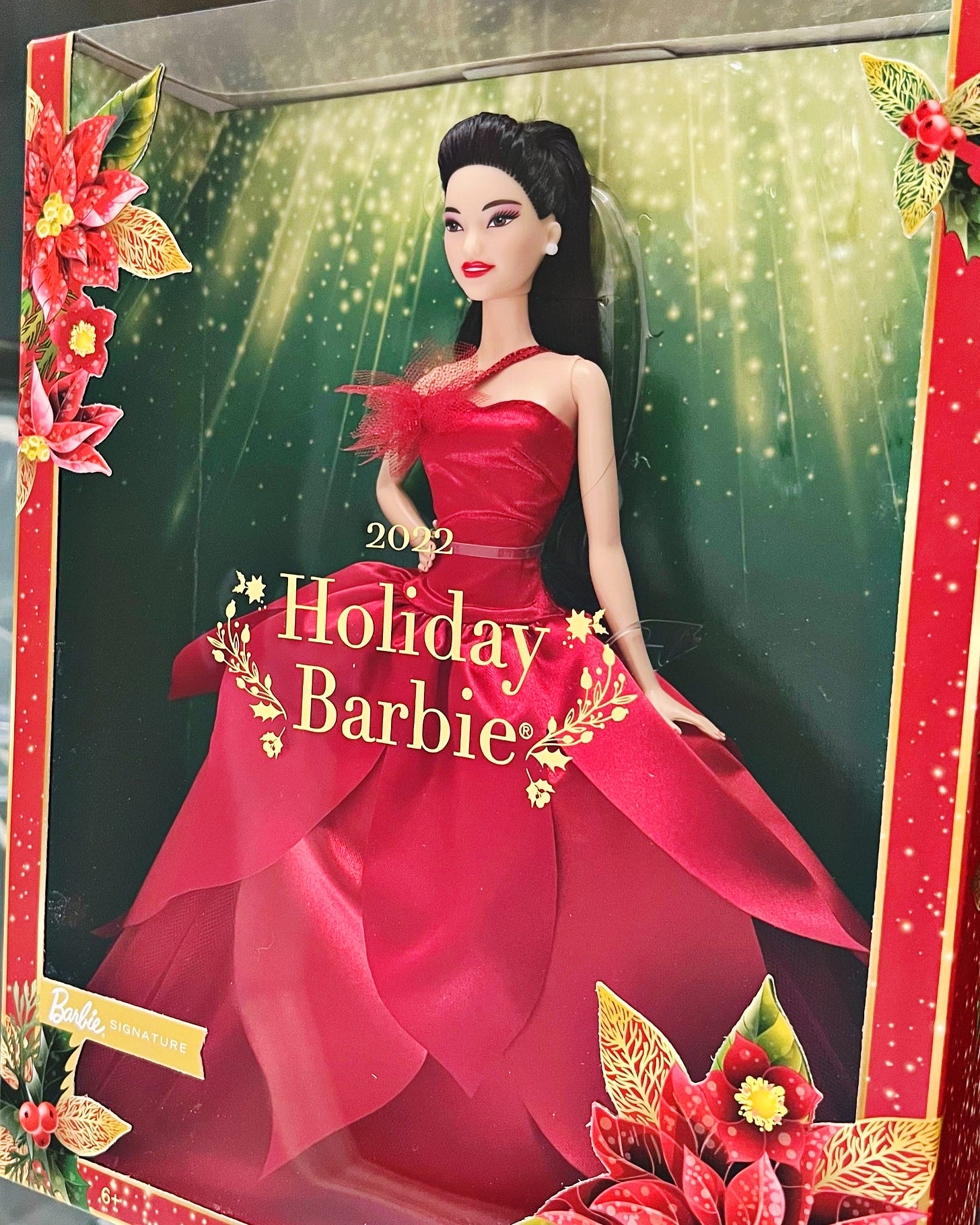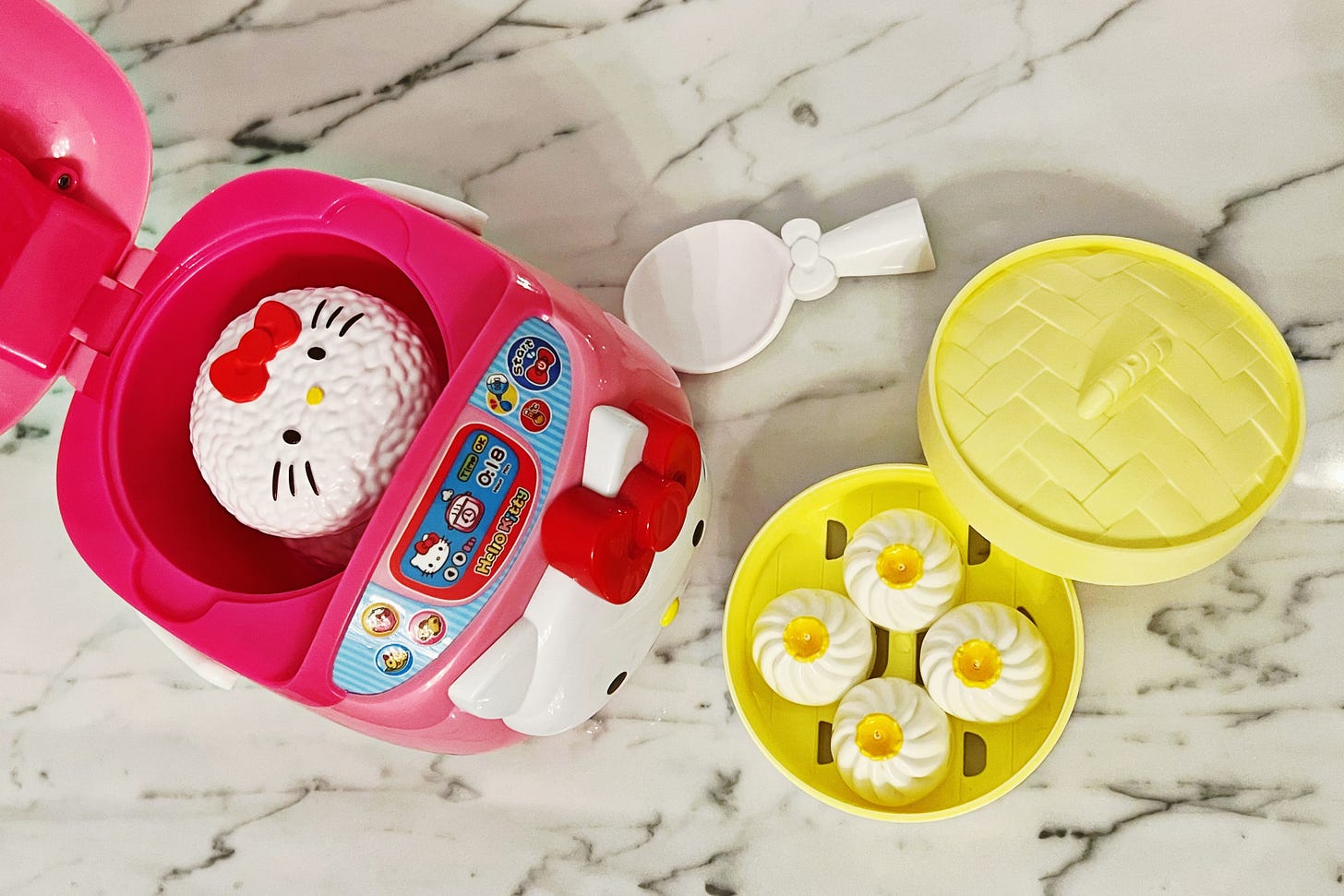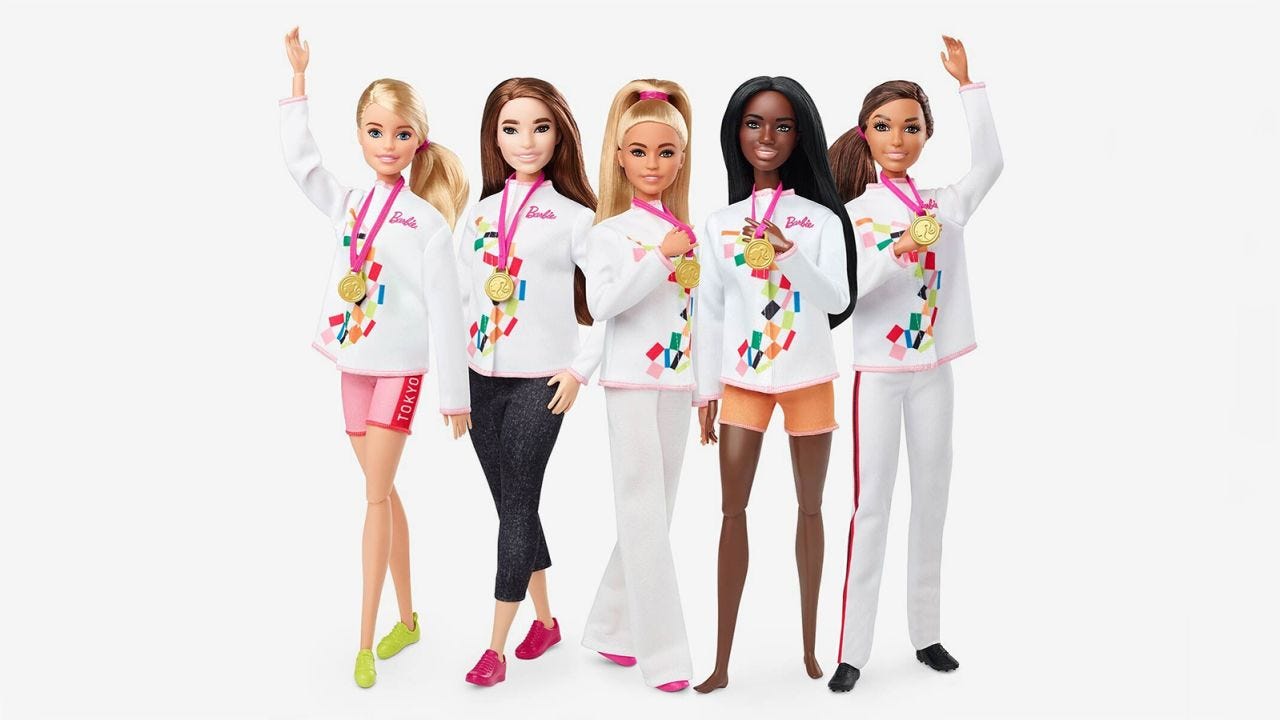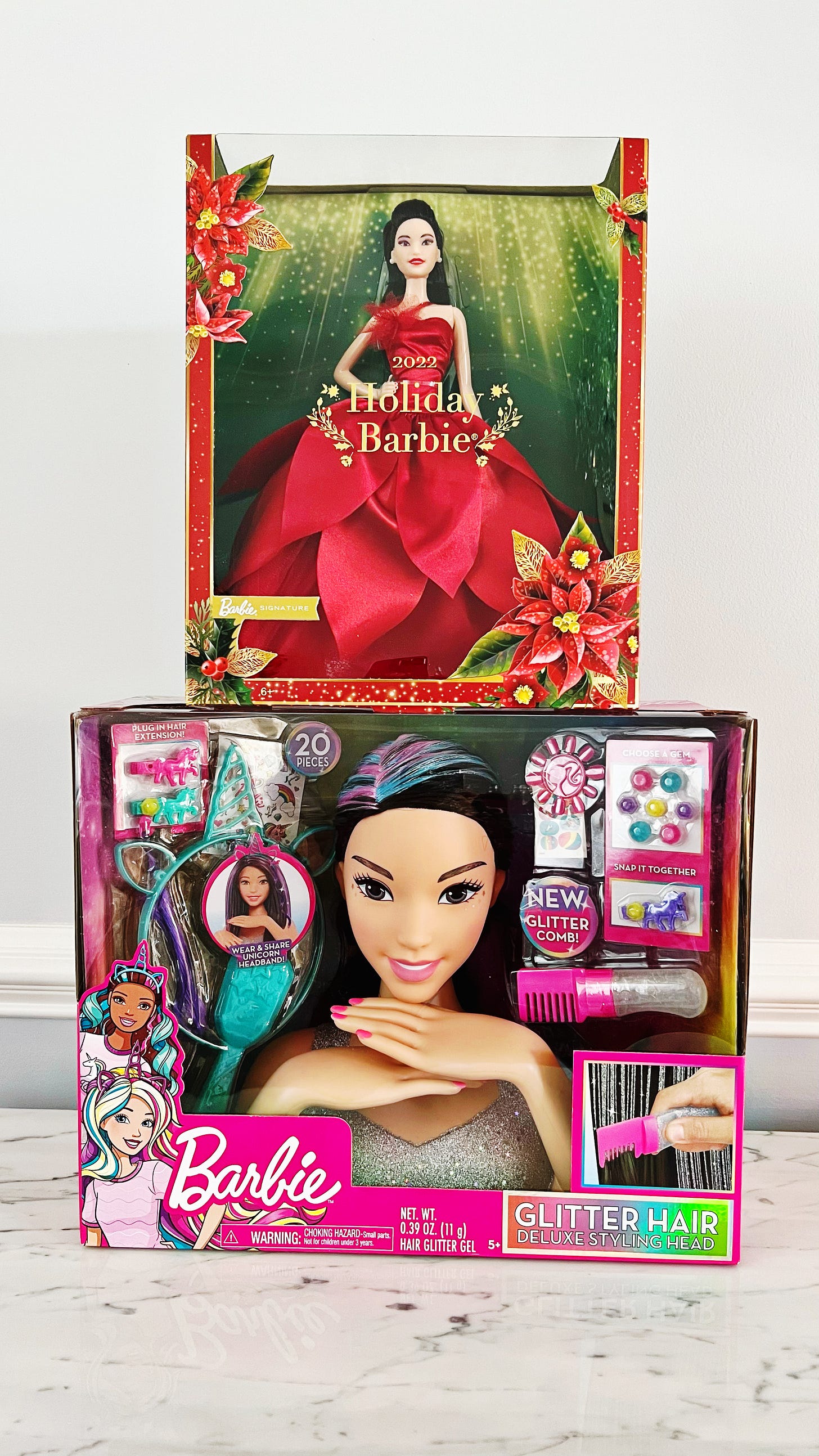To Be Chinese-American: A Barbie That Looks Like Me
When playing with dolls isn’t just about having fun but exploring one’s cultural identity.
Back in October, Amazon’s annual toy catalog landed in our mailbox. Our five year old daughter was super excited to browse through it. As she flipped through each page, telling me what she wanted from Santa, I nodded along but did not commit to any of those toys.
Then, she paused on the page where four Holiday Barbies posed, their smiles beckoning to her, their poinsettia gowns a blazing crimson. Each Barbie was of a different ethnicity; Caucasian, Black, Hispanic, and Asian.
I glanced over as she examined each doll in detail. I held my breath, wondering which doll she would choose. It didn’t really matter, because she should choose what she liked. But it did matter, because I secretly hoped that she would pick a particular one. After several seconds, she pointed to the Asian Barbie and said, “I want this one.” Success! I held in my excitement, nodding nonchalantly at her. And then, she continued flipping through the catalog.
This was a grand moment for me as a Chinese-American mother. I loved how forthright she was, how decisive, how confident. There was a doll that looked like her and she naturally selected that one. In her life, she will never ask me, why isn’t there a doll that looks like me?
When I was growing up, I wasn’t aware that Asian dolls existed. I now know that Mattel began creating Asian Barbies in the early 1980s, with names like Miko and Kira, and later on, Lea and Kayla. My memories are of walking through Jordan Marsh, Filene’s, Woolworth, and K·B Toys (all stores in Boston that no longer exist now), where there was inevitably a section devoted to all things Barbie. However, I never saw them in any of those stores. Boston was no New York City but it was a cozy yet diverse metropolis nonetheless. One would think that I would have chanced upon an Asian one but I never did. My own Barbies had golden hair and sapphire eyes. I never questioned why they didn't look like me, a little Chinese girl with black hair and dark brown eyes. It just was.
After our daughter was born, although she is inherently American, we made a concerted effort in our household to normalize her Chinese heritage. She would be multilingual (she is fluent in English and Cantonese and learning Mandarin). She would eat Chinese food. She would celebrate Chinese holidays. She would play with toys that reflected her cultural heritage, not in a hokey way but one that mirrored her everyday modern lifestyle.
The toy part proved to be more difficult than I anticipated. On a trip to Guangzhou, China in late 2019, the only cultural-specific toy I could find were plastic bamboo steamers holding little buns, from a store that was the Chinese equivalent of a Dollar Tree. We found a Hello Kitty rice cooker in one of the bigger toy stores. I searched for a Chinese Barbie but the Barbie dolls there were all Caucasian. I would have been content with a doll made by a domestic brand that had black hair and brown eyes but we had no such luck while we were there.
Even in China, did no one play with Asian looking dolls?
It wasn’t until I was standing in the toy aisle at Target one day (shortly after returning from China) that I saw an Asian Chelsea doll. My daughter was still a toddler and hadn’t yet been exposed to Barbie dolls but I remember thinking, wait, Mattel makes Asian dolls? That was when the scouring began. The Googling. The eBay hunts. There were dolls that my daughter could play with that looked like her. It was a eureka moment for me.
Fast forward three years and today, my daughter has accumulated multiple Asian Barbies and one Ken, more Mulan dolls than I can count (she is a die-hard fan), and a few Asian Chelsea dolls. She plays with all of them, and just like her, they eat Chinese food like dumplings, spring rolls, fried rice, and mooncakes during the Mid-Autumn Festival. She has dolls of other ethnicities and through her imagination, she constructs stories for them, reenacting scenarios from school or shows and movies she’s watched. A Caucasian Chelsea doubles as her preschool bestie.
I read somewhere that for the Holiday Barbie, aside from the Caucasian and Black versions, this is the first year that Hispanic and Asian versions are offered. Why did it take this long to happen? I don’t really know. What I do know is that Mattel was harshly criticized during the Tokyo 2020 Olympics, where in a five doll collection released for the Games, they failed to include an East Asian doll but had two blonde Caucasian dolls instead. People were not impressed.
To be frank, my daughter doesn’t need more dolls; she is fortunate and has plenty to play with. However, the young girl inside of me is grateful that the world is progressing, that these dolls exist for children out there. I also won’t sugarcoat the fact that in this post-pandemic era, where Asian hate was horrifically amplified, I want my little girl to feel safe and secure, with both herself and the world. If it has to start with a doll, while not a true replica of her, but enough that she can feel that she belongs, then a doll is where we start to nurture her self-esteem and cultural identity.
Presently, the Asian Barbie is gift wrapped and placed under the tree, ready for its reveal on Christmas morning. We also added a large Asian Barbie bust to add to the fun (another hard to find toy). Every Asian doll we add to her collection is to let the toy manufacturers know, these dolls matter, because we matter.
=============
Author’s Note:
I decided to start a new series of posts which will cover my sentiments and life experiences as a Chinese-American woman. If you have thoughts you want to share, I would love for us to discuss in the comments section.
With the holidays upon us, GHOSTLING will be delayed until after the New Year. I wish you all a safe and healthy holiday break. Hope to see you soon!
🤍 L










This post deeply resonated with me. As a parent of an Asian American child, I share the concerns about our children growing up proud of their heritage. It's so important for them to see their identity reflected in their toys, which reinforcing that their culture is a strength, not a barrier. Your story is inspiring and a reminder of how these small steps can build our kids' confidence in their cultural identity.